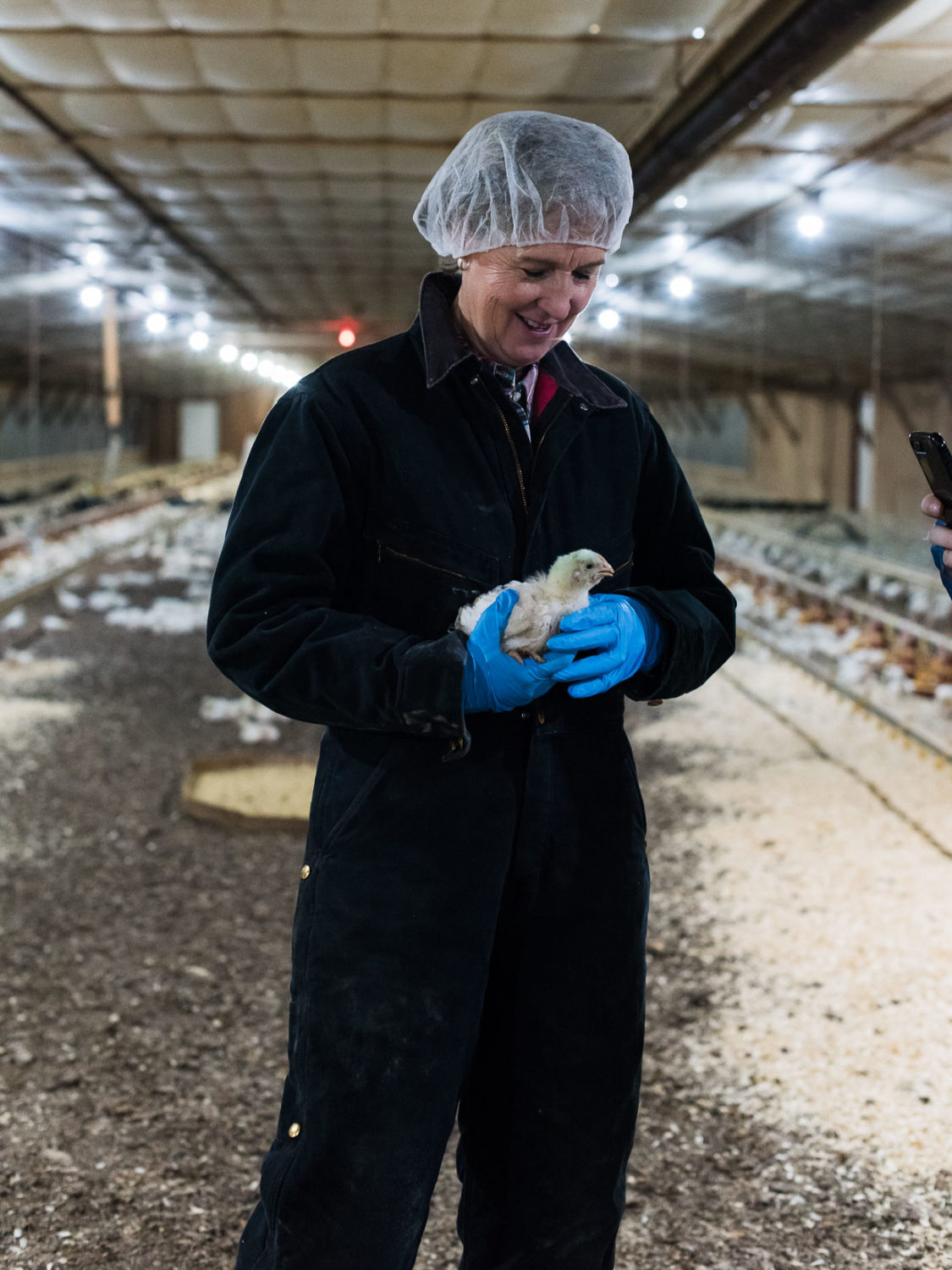Since Day One: Our Commitment to Chicken Welfare
You might have seen news about restaurants and companies announcing further commitments to chicken welfare in the last year. In today’s day and age, we all want our dining decisions to be informed and reflect our values, especially when it comes to how our food is raised.
While chicken welfare at a company level is already a fundamental assurance of the industry, we can often be misled by groups who want consumers to disregard the animal welfare commitments being vigilantly followed each day throughout the entire U.S. chicken industry.
You can be certain that the chicken industry is committed to the health of our flocks, constantly innovating and improving how we raise and produce chicken in the U.S. Learn how the U.S. chicken industry is ensuring the welfare of our flocks.
A healthy flock is a farmer’s top priority.
In the modern poultry industry, farmers are commonly trained in animal welfare by other company personnel who have been specifically educated to become trainers. These trainers may have received their instruction from a variety of sources such as university, trade association or independent workshops. And many of them have been trained and certified by the Professional Animal Auditor Certification Organization (PAACO).
Chickens are raised in climate-controlled houses with 24/7 access to food and water.
You might be surprised to learn that broiler chickens aren’t raised in small barns or cages as they grow. In fact, these flocks spend the majority of their lives in large grow-out houses designed to give birds enough room to eat, drink, rest and move around freely. Grow-out houses also offer security from extreme weather, predators, insects and the possible introduction of diseases.
As the name suggests, the grow-out house gives chickens all the room they need to grow! Because adequate space is a necessity for the bird’s health, it is always in the farmers’ best interests. The number of birds in a chicken house is based on a few factors, including the overall size of the barn and the target market weight of each flock – and is measured to ensure the chickens have space to walk around and ready access to fresh water and feed throughout their life.
Chicken welfare guidelines are certified and audited by third parties.

Along with being raised by farmers trained in animal welfare, consumers can be assured their broiler chickens are raised cage-free, free of added hormones and steroids (it’s actually against the law!) and monitored by licensed veterinarians. In fact, these four tenants comprise the industry’s Chicken Guarantees.
In addition to these guarantees, the National Chicken Council (NCC) developed the NCC Animal Welfare Guidelines and Audit Checklist, which have been widely adopted within the chicken industry. After a significant review process, these guidelines and audit checklist were certified by the PAACO, a leading authority on animal welfare auditing that provides high-quality training and certification credentials for auditors. Most chicken companies use the NCC guidelines as basis for their own. Other third parties like PAACO also routinely audit chicken hatcheries, grow-out houses and processing plants to ensure companies follow guidelines.
Curious for more details around NCC’s Animal Welfare Guidelines? All the details are available here.
The commitment to chicken welfare doesn’t stop at the farm. Just like the farmers, employees at the processing plants are also trained in the humane handling of chickens. Many protocols are put in place to ensure each chicken is handled with the utmost care. These trained workers are sure each chicken is properly slaughtered before feather removal, evisceration and cleaning. Every step of the process is monitored by U.S. Department of Agriculture inspectors to ensure the chicken we eat is safe and meets USDA safety standards.
The chicken industry is committed to continuous improvement.
The chicken industry is always seeking ways to improve the health and welfare of their birds, because without healthy birds, there would be no chicken industry.
For decades, chicken producers have evolved on-farm care, transport, handling, processing and genetics to improve welfare outcomes while meeting ever-changing consumer preferences. Adapting and offering consumers more choices has been the main catalyst of success for the chicken industry overall.
Whether it’s looking at space and housing, studying different nutrition programs, breeding for the healthiest birds, or working to eradicate diseases, the industry remains committed to continual improvement to do what is best for the bird, and ultimately, the consumer.



Looking to learn more about the chicken industry’s initiatives? While also maintaining the highest standards of animal husbandry, the chicken industry has been able to reduce the use of water, farmland, electricity, greenhouse gasses, and other valuable resources through continuous innovation.